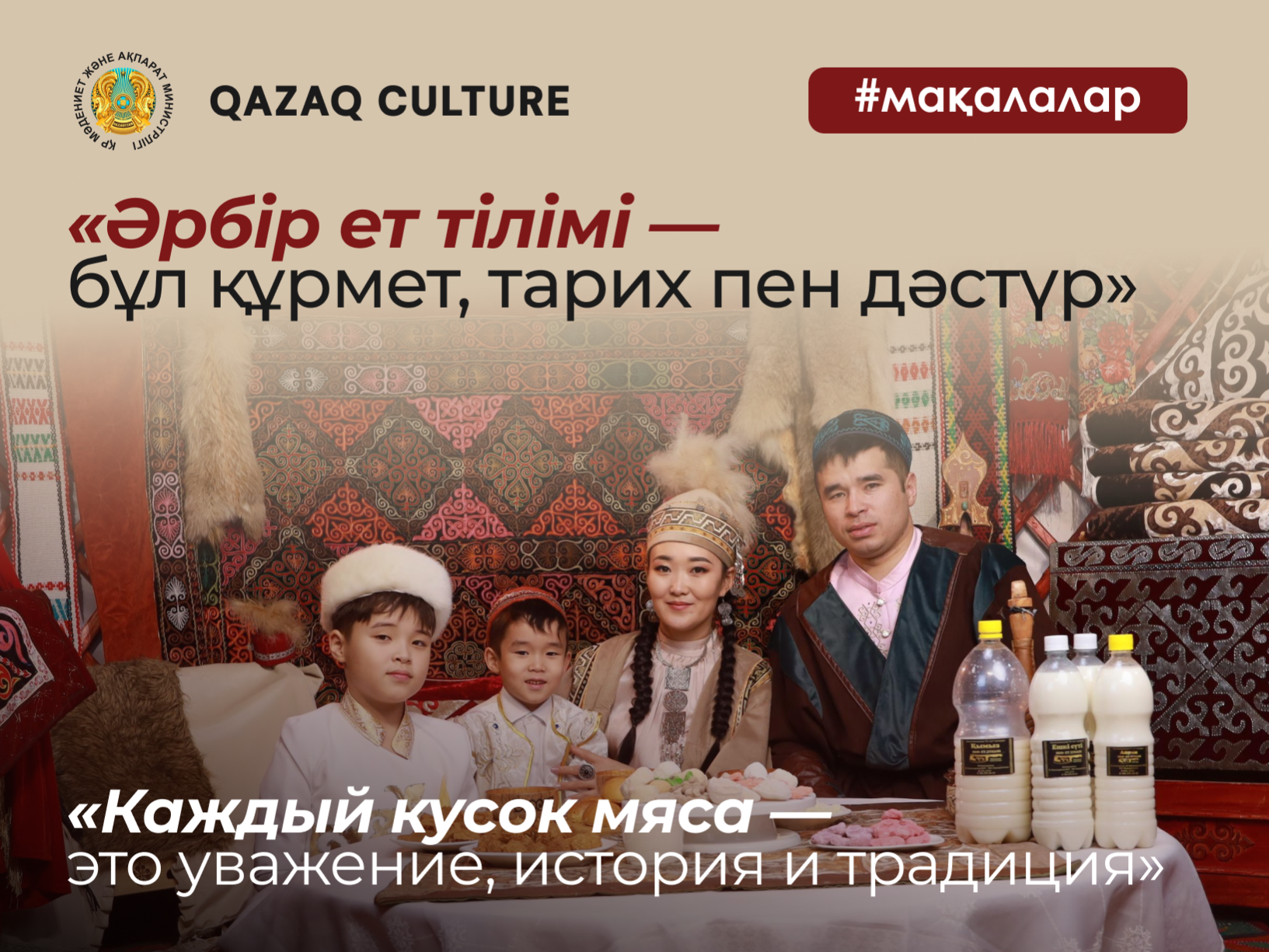"Every cut of meat is respect, history and tradition"

Asemgul Kabeldinova, the keeper of the family business and the founder of the Eco et store, talks about the culture of Kazakh meat, forgotten traditions, and the mission to preserve the national code through a special ritual of treating people with “Tabak tartu.”
Tell us how the idea of doing meat business came about? Was it a matter of the soul or a continuation of the family business?
- Meat is not just food. It is the essence of Kazakh identity. Since childhood, we grew up with the smell of meat on the table. Any family holiday, toy, shіldekhan or zhanaza - everything was accompanied by a treat made of meat. This was how it was with my father, this was how it was in every village. But the idea to do this seriously came much later.
Over time, we noticed that meat was ceasing to be what it was for our grandparents. People began to forget not the taste, but the meaning of meat. Culture disappears, sacredness is lost. Then we realized: we do not just want to sell meat - we want to bring back lost traditions. Let me remind you that meat in Kazakh is a sign of respect, a way to express reverence, a language without words.
It became a continuation of the family business. And when you delve deeper, you realize that meat is not just a product for us, it is something that touches the soul. In Kazakh culture, meat is always about hospitality, status, and honesty. And each tabak is a separate story, behind which there is a whole philosophy.
What does meat mean to you in Kazakh culture? Why is it considered part of the spiritual heritage?
– For Kazakhs, meat is not just food, it is the spiritual and cultural code of the nation. Each bone, each part of the animal carcass carries a certain meaning. This is the language of education, respect and hierarchy. But the most important thing is the art of serving "Tabak tartu". Not everyone can master it - you need to feel it with your heart.
Among our people, there is a real science "zhilіkteu" - carcass analysis. This shows the age, status, and even the degree of kinship of a person. The ability to properly cut and serve meat is part of national etiquette.
Today, unfortunately, many young people do not know these subtleties. We realized that our task is not only to sell meat, but also to carry knowledge, to tell what is behind it. This is no longer just a business, it is a spiritual mission.
Where did you learn the subtleties of the traditional cutting of meat and the etiquette of serving it?
- I learned this from early childhood. I watched my parents, my elders. My grandfather especially passed on a lot of knowledge to me. He was a real master of this business. Every time guests came to us, he did not just cut the meat - he respectfully explained to whom and what part was served, what it symbolized.
Ata was my first and most important teacher. Later, I learned a lot from the aksakals in the village. You see, this is not just cooking. This is tradition, respect, the philosophy of hospitality. What are the rules in "Tabak tartu"? How is the traditional hierarchy of serving meat structured?
– According to tradition, after slaughtering and cooking the meat, each part of it is served according to a certain principle. Age, social status, degree of kinship and even the gender of the guest are taken into account.
• Bas (head) is the highest form of respect. Usually served to the oldest or most honored guest.
• Zhambas, ortan zhіlik (hip and femur bones) - for older, respected guests.
• Kazy, zhaya, sur et (delicacies) - also go to elders or special guests.
• Kari jilik (old bone) — often served to young people or sons-in-law, with a hint: "You are still young, study."
• Tokpan jilik, bel omyrtka (bones from the loin) — intended for guests with a special status, sometimes also for the son-in-law.
• Kuyymshak (tailbone) — usually served to women, especially matchmakers and wives of relatives.
• Tos (breast) — served to the daughter-in-law or young woman, sometimes to the son-in-law.
• Shuzhyk, omyrtka, kabyrga (sausage, vertebrae, ribs) — most often — to children and young people.
These are not just rules, this is the language of respect and hierarchy, an indicator of skill and a culture of reverence, where nothing is done by chance.
– What role does "Tabak tartu" play today? What does it mean to you now?
– Today "Tabak tartu" is respect for elders, a sign of good manners and commitment to national identity. People say: "Konak - Kudaydin elshisi", that is, a guest is a messenger of God. And how you greet a guest, what you put in his tabak, speaks about the culture of the whole family.
Each part is in its place. This is not just a tradition, it is a way to preserve the cultural code, maintain respect, understanding and structure. Yes, times are changing, but respect for elders, subordination, order - this is what should always remain.
If we ourselves do not take care of this, then the new generation will perceive meat as ordinary food. And for a Kazakh, et is the language of tradition, the honor of the family, a way to show one's culture.
To preserve this hierarchy means to preserve respect for ancestors, loyalty to culture, and to give a moral guide to future generations.